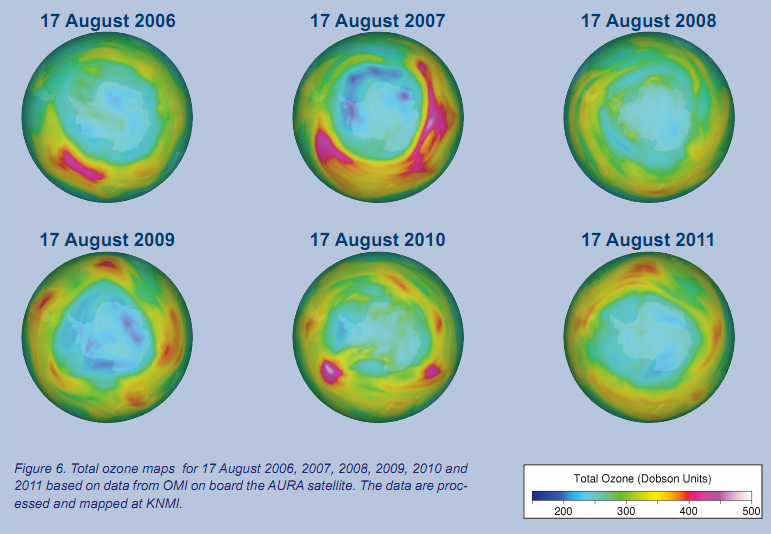I suppose by now this sort of thing should not come as a surprise, but via the UN News Service, it seems that signs of ozone depletion are once again appearing over the Antarctic.
In Antarctica, the so-called ozone hole is an annually recurring winter/spring phenomenon due to the existence of extremely low temperatures in the stratosphere and the presence of ozone-depleting substances.
Despite international progress in cutting production and consumption of ozone-depleting chemicals, they have a long atmospheric lifetime and it will take several decades before their concentrations are back to pre-1980 levels, according to the WMO’s first Antarctic Ozone Bulletin for this year.
In mid-August, the ozone hole area was normal compared to recent years – larger than in 2008 and 2010, but smaller than in 2009, according to the bulletin. As the sun returns to Antarctica after the polar night, it is expected that ozone destruction will speed up. The extent of ozone loss will to a large extent depend on meteorological conditions.
The depletion of the ozone layer is also due to a very cold winter in the stratosphere, which is the second major layer of the Earth’s atmosphere, just above the troposphere.
WMO and the scientific community will use ozone observations from the ground, weather balloons and satellites, as wells as meteorological data, to monitor the development of the ozone hole in the coming weeks and months.
The onset of ozone depletion varies considerably from one year to the next, depending on the position of the polar vortex and availability of daylight after the polar night.
Measurements with ground based instruments and with weather balloons show first signs of ozone depletion at some sites located close to the vortex edge.
As the sun returns to Antarctica after the polar night, it is expected that ozone destruction will speed up, according to the WMO bulletin.
All that comes via the World Meteorological Organization’s first Antarctic Ozone Bulletin for this year.
http://www.wmo.int/pages/prog/arep/documents/ant-bulletin-1-2011.pdf

